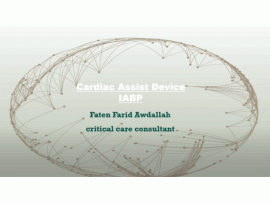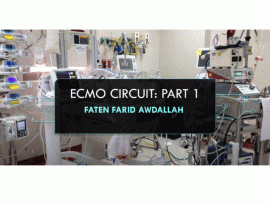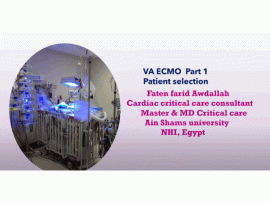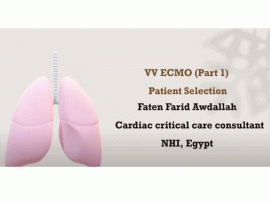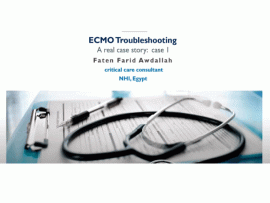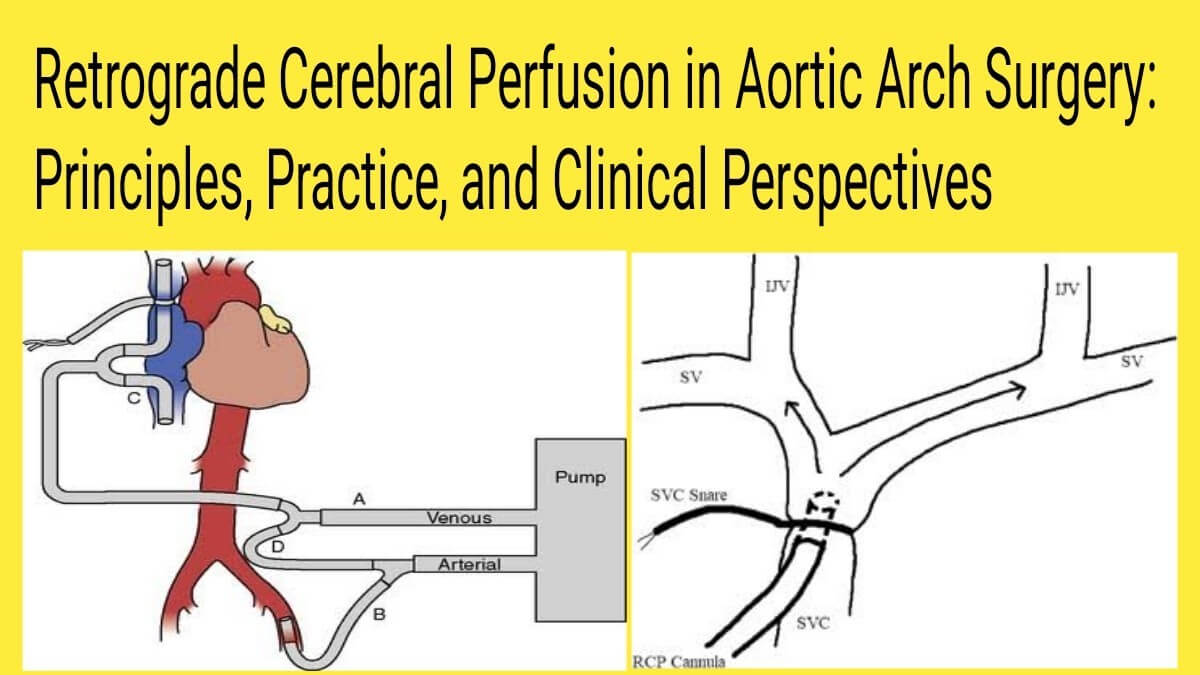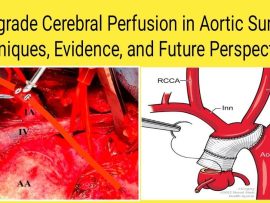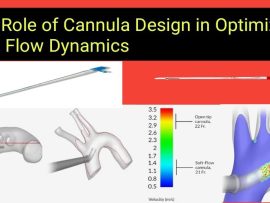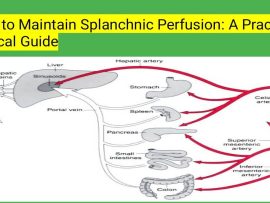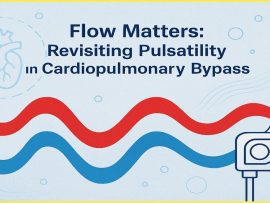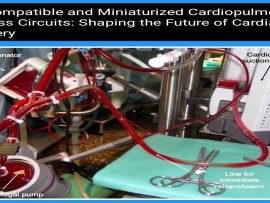Abstract Objective To report differences between 2 anticoagulation protocols during venoarterial extracorporeal membrane oxygenation (VA-ECMO) intraoperative support and their effects on outcomes after lung transplantation. Methods We performed a retrospective..
Lire la suiteAbstract Objective To compare the utility of a saline-based modified del Nido (mDN) cardioplegia solution with a conventional institutional technique (multidose St. Thomas blood cardioplegia) for mitral valve repair (MVR)..
Lire la suiteAbstract Background Coagulopathy frequently complicates venovenous extracorporeal membrane oxygenation (VV ECMO) procedures, yet its underlying mechanism remains elusive. This retrospective study aimed to identify factors contributing to coagulopathy during VV..
Lire la suiteAbstract A 54-year-old male presented after a suicide attempt, suffering severe cardiac and extracardiac injuries from firing a nail gun into both temples () and his chest. Imaging showed six..
Lire la suiteAbstract Background Despite the extensive volume of research published on checklists in the intensive care unit (ICU), no review has been published on the broader role of checklists within the..
Lire la suiteAbstract Vasoplegic syndrome (VS) is a common and potentially life-threatening complication of cardiac surgery with cardiopulmonary bypass (CPB). It presents a significant haemodynamic challenge that is often difficult to manage..
Lire la suiteAbstract Background Extracorporeal membrane oxygenation (ECMO) is increasingly used in patients after cardiac surgery; however, anticoagulation management has consistently been challenging. This study aimed to explore the feasibility of a..
Lire la suiteAbstract Background In refractory cardiac arrest, extracorporeal cardiopulmonary resuscitation may increase the survival chance. However, in cases of unsuccessful treatment, extracorporeal cardiopulmonary resuscitation may additionally provide an important source of organ donors...
Lire la suiteAbstract Cardiogenic shock (CS) in acute myocardial infarction (AMI) is a life-threatening syndrome characterized by systemic hypoperfusion that can quickly progress to multiorgan failure and death. Various devices and configurations..
Lire la suiteAbstract Superior vena cava drainage during venoarterial extracorporeal membrane oxygenation (ECMO) may reduce access insufficiency and differential oxygenation and is typically achieved via the femoral approach. Direct multistage jugular cannulation may be..
Lire la suiteAbstract OBJECTIVES It has been suggested that long-term risk for incident cancer is increased in patients operated with cardiopulmonary bypass. We compared the risk for incident cancer and cancer-specific death..
Lire la suiteFaten Farid Awdallah: [gallery ids="49616"] Critical care consultants at king Abdullah medical city, holly capital. Critical care ass professor at national heart institute, Egypt
Lire la suiteFaten Farid Awdallah: [gallery ids="49616"] Critical care consultants at king Abdullah medical city, holly capital. Critical care ass professor at national heart institute, Egypt
Lire la suiteFaten Farid Awdallah: [gallery ids="49616"] Critical care consultants at king Abdullah medical city, holly capital. Critical care ass professor at national heart institute, Egypt
Lire la suiteFaten Farid Awdallah: [gallery ids="49616"] Critical care consultants at king Abdullah medical city, holly capital. Critical care ass professor at national heart institute, Egypt
Lire la suiteFaten Farid Awdallah: [gallery ids="49616"] Critical care consultants at king Abdullah medical city, holly capital. Critical care ass professor at national heart institute, Egypt
Lire la suitePerfusión regional normotérmica (PRN) para la obtención de órganos en donación en asistolia controlada. Ponente: Dr. Juan Blanco (España) Enfermero. Máster y Posgrado en Técnicas de perfusión y oxigenación..
Lire la suite1. Introduction Cerebral protection is a cornerstone of successful aortic arch surgery, where the brain is highly vulnerable during periods of circulatory arrest. While deep hypothermic circulatory arrest (DHCA) alone..
Lire la suite1. Introduction Aortic arch surgery presents significant neurologic risks due to the potential for cerebral ischemia during circulatory arrest. Traditional methods such as deep hypothermic circulatory arrest (DHCA) provided limited..
Lire la suiteIntroduction: More Than Just a Tube In the world of cardiopulmonary bypass (CPB), the arterial cannula is far more than a simple conduit for blood flow. Every feature—from the shape..
Lire la suiteIn the complex world of cardiopulmonary bypass (CPB), where precision, safety, and efficiency govern every aspect of patient care, the significance of flow dynamics cannot be overstated. While the primary..
Lire la suiteIntroduction Splanchnic perfusion refers to the blood flow through the splanchnic circulation, which supplies the gastrointestinal organs including the stomach, intestines, liver, pancreas, and spleen. Maintaining adequate splanchnic blood flow..
Lire la suiteIntroduction The heart is nature’s pulsatile pump, delivering rhythmic surges of blood critical not only for oxygen transport but also for maintaining vascular health. Cardiopulmonary bypass, a lifesaving intervention, often..
Lire la suiteIn cardiopulmonary bypass (CPB), roller and centrifugal pumps have been the mainstays for decades, each with unique benefits and challenges. However, these traditional blood pumps come with inherent pressure-related risks..
Lire la suiteIntroduction Cardiopulmonary bypass (CPB) is fundamental to modern cardiac surgery, allowing surgeons to perform complex procedures on a still and bloodless heart. However, traditional CPB systems are associated with complications..
Lire la suiteAbstract Objective Postoperative pneumonia (POP) frequently complicates cardiac surgery that involves cardiopulmonary bypass (CPB). This study aimed to assess the diagnostic utility of procalcitonin (PCT) for identifying pneumonia after CPB-assisted..
Lire la suiteAbstract Background: Extracorporeal cardiopulmonary resuscitation (eCPR) is a method for initiation of cardiopulmonary bypass during resuscitation of a patient with refractory cardiac arrest to support end-organ perfusion. This retrospective study evaluates..
Lire la suiteAbstract Importance Platelet transfusion is a frequent procedure with benefits and risks. Objective To provide recommendations in adult and pediatric populations in whom platelet transfusions are commonly performed. Evidence Review Grading of Recommendations..
Lire la suiteAbstract Background Postoperative hypothermia seems to be a common problem in surgical patients but is easily ignored. This study aimed to identify risk factors for postoperative hypothermia in non-cardiac surgery..
Lire la suite







